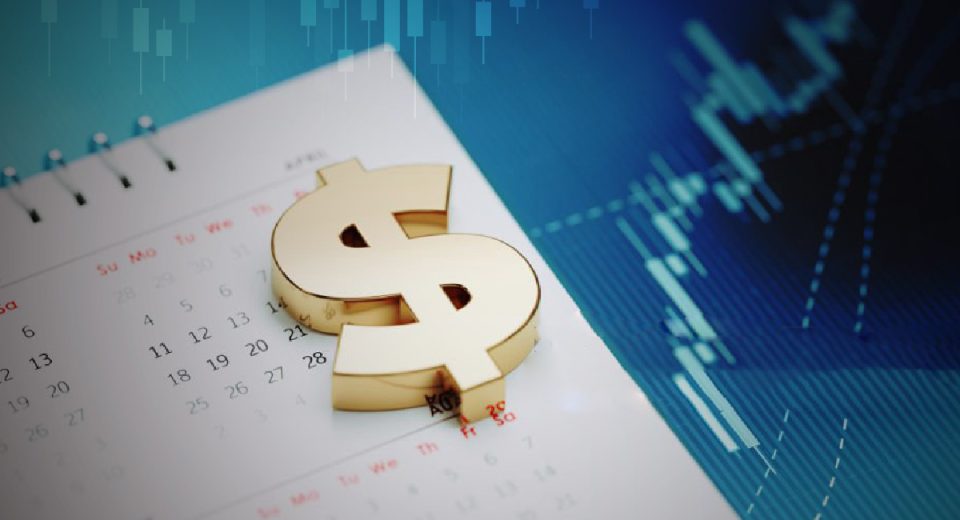US Tariffs Trigger Gold Breakout: How to Trade It

The IMF has lowered its global growth forecast for 2025 from 3.3% to 2.8%. The US GDP is also expected to bear the brunt of increased tariffs. It is anticipated to grow by only 1.8%, significantly lower than the earlier forecast of 2.7%. The UK, Germany and the broader Eurozone are expected to experience a similar adverse impact with slower growth than previously expected. Against this backdrop, gold prices surged nearly 10% in one month after Trump announced his tariff policy on April 3, 2025. Investor sentiment is clear – secure your portfolios against the tariff chaos by directing your funds towards safe havens. The yellow metal has been the longest-standing safe haven, favoured by investors to shield their portfolios against market uncertainties.
US Tariffs: Fuelling the Golden Fire
Traders recognise the potential of Donald Trump’s tariffs to disrupt the global economy. This has weighed on major US indices. By May 6, 2025, the S&P 500 had shed 3.93% YTD, while the NASDAQ 100 had declined 4.80%. The performance of the historically safe currency, the USD, was also dampened by the Trump tariffs. Thanks to the self-proclaimed Tariff Man’s America First agenda, the ICE US Dollar Index (DXY), the index measures the US dollar against a basket of currencies, had declined 8.06% YTD. Here’s what happened.
Benchmark US Indices Lose Investor Interest
The US is “overly dependent on imports.” The manufacturing, agriculture, construction, and automotive sectors are expected to be the most impacted by tariffs. The eCommerce and retail sectors see have a lower impact. Costlier imports can potentially stifle the country’s employment and growth. This made index traders sceptical and triggered a sell-off after the first round of tariff announcements. Consequently, the S&P 500 broke its longest winning streak since 2004. On May 5, 2025, the S&P 500 snapped out of its 9-week-long streak. Trump’s 100% tariff on movies produced outside the country highlighted that the White House is bent on reducing imports, irrespective of the goods. Disappointed investors turned towards the precious metal, which supported the XAU/USD rally.
Trump’s Powell Threats Weighed on the Greenback
Donald Trump threatened to fire Jerome Powell, the Fed Chair of nearly seven years, for not lowering interest rates on his command. This shook investor confidence in the US dollar as a safe haven asset. DXY hit a three-year low on April 2, 2025, the day after the US president’s tariff threats on the world. Meanwhile, the euro, Japanese yen and Swiss franc surged against the USD.
Investors who considered the USD as a growth asset for their portfolios appear to have changed their minds about the global reserve currency. They have started to add gold to their portfolios.
Gold has a History of Surviving Economic Turmoil
Gold has historically demonstrated resilience during economic downturns and periods of high inflation. The Gold PPI surged 101.1% between 2008 and 2012. Plus, central banks across the world added gold to their reserves for the third consecutive year in 2024. This is a clear sign that amid geopolitical uncertainties, institutions and governments trust the yellow metal to preserve value. These factors encourage traders to invest in the yellow metal. As a combined result, the XAU/USD had surged 27.92% YTD by May 6, 2025.
Gold Trading Strategies for Day Traders
Policy uncertainty leads to market confusion, and traders tend to invest in safe havens during such times. This is reflected in the negative correlation between DXY reversals and gold price rally reaching 62% in Q1 2025. Given the BRICS focus on de-dollarisation, gold prices may continue to trend higher. Goldman Sachs hiked its forecast for the yellow metal for the third time in 2025. It now expects gold prices to hit $3,700 by end-2025, giving 41% returns.
Long-term traders often hold bullion to take advantage of eventual price changes in the precious metal. However, gold is a non-returning asset. This means it does not offer any ongoing returns, such as dividends. This is what day-traders use specific strategies to optimise their portfolios by getting strategic exposure to the XAU/USD.
Day-Trading Strategies for XAU/USD
Here are a few day-trading strategies to add the yellow metal to your portfolio:
Trading with Support and Resistance Levels
The RSI and Fibonacci indicators help identify the day’s support and resistance levels. Traders take positions when they expect a reversal. For instance, if the price approaches resistance and the RSI shows overbought conditions (>70), opening short trades helps take advantage of the decline. Conversely, traders open long trades when they expect the price to bounce off the support level when the RSI is in the oversold territory (<30). Contracts for difference (CFDs) is a popular way to trade XAU/USD. They allow traders to explore opportunities in both rising and falling price directions.
Breakout Trading with Volume Analysis
Volume indicators, such as on-balance volume (OBV) or Bollinger Bands (BB), gauge trading volume. When the volume is too low, for instance, when the Bollinger Bands form a narrow channel, the market is considered ripe for a breakout. Traders tend to open long positions when the price breaks out above the upper band and short positions when the price breaks out below the lower band.
Practising on a demo account can help you refine your gold trading strategy to align with your risk appetite and trading goals. Keep an eye on the news events, such as tariff announcements, geopolitical tensions, ETF flows and DXY performance to make informed decisions.
To Sum Up
- Trump’s tariffs are expected to stifle global growth.
- US indices have declined since the first round of tariffs.
- The DXY trended lower as investors drifted away from the greenback.
- Gold has been a trusted safe haven for a long time.
- Support and resistance levels and volume analysis are popular XAU/USD trading strategies.
Disclaimer:
All data, information and materials are published and provided “as is” solely for informational purposes only, and is not intended nor should be considered, in any way, as investment advice, recommendations, and/or suggestions for performing any actions with financial instruments. The information and opinions presented do not take into account any particular individual’s investment objectives, financial situation or needs, and hence does not constitute as an advice or a recommendation with respect to any investment product. All investors should seek advice from certified financial advisors based on their unique situation before making any investment decisions in accordance to their personal risk appetite. Blackwell Global endeavours to ensure that the information provided is complete and correct, but make no representation as to the actuality, accuracy or completeness of the information. Information, data and opinions may change without notice and Blackwell Global is not obliged to update on the changes. The opinions and views expressed are solely those of the authors and analysts and do not necessarily represent that of Blackwell Global or its management, shareholders, and affiliates. Any projections or views of the market provided may not prove to be accurate. Past performance is not necessarily an indicative of future performance. Blackwell Global assumes no liability for any loss arising directly or indirectly from use of or reliance on such information here in contained. Reproduction of this information, in whole or in part, is not permitted.




